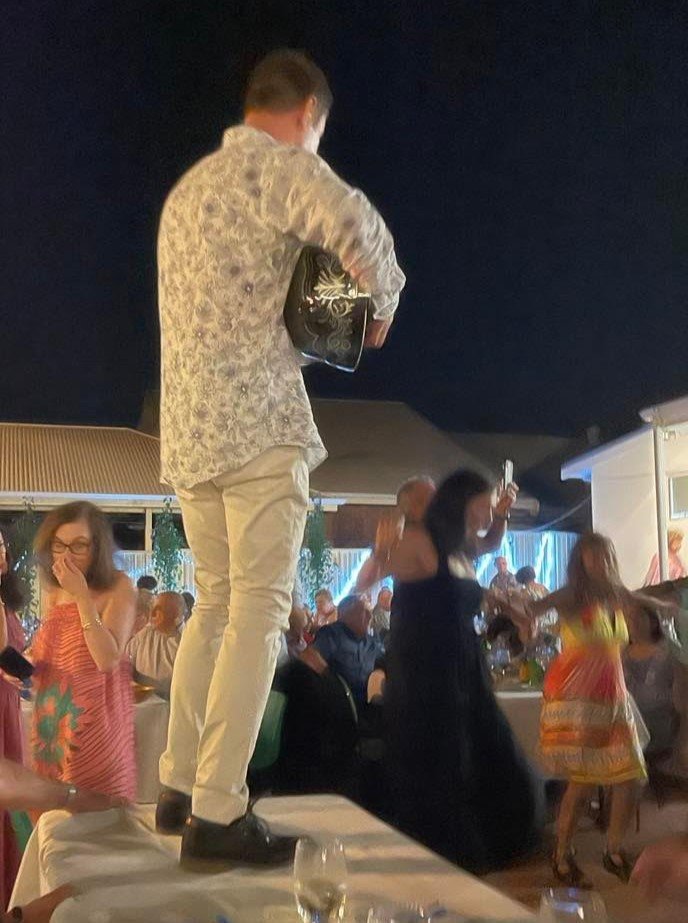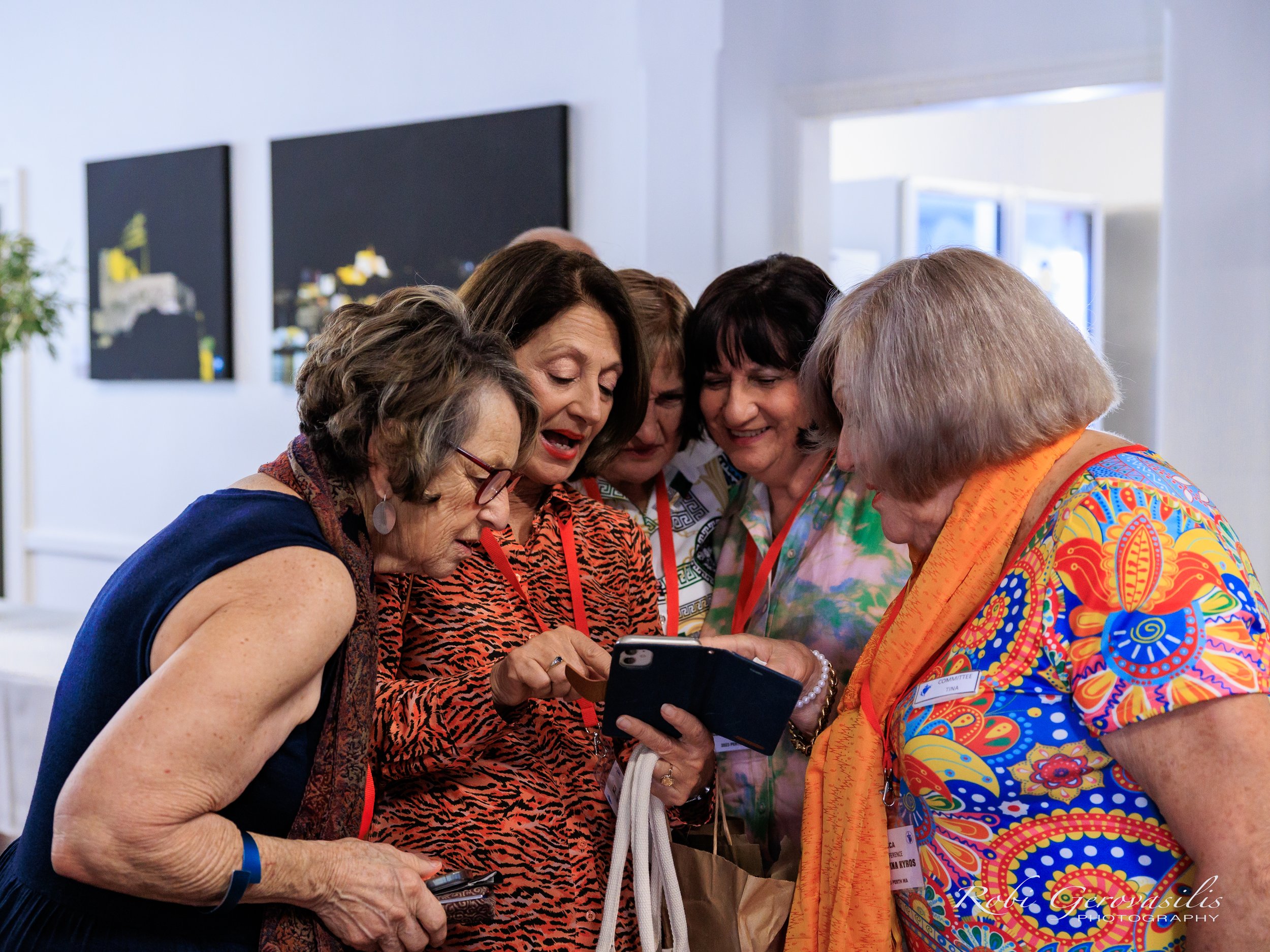
About
Established in 1912, we proudly share Castellorizian and Greek culture, food and social events with members and the Western Australian community.
Castellorizo (Kastellorizo (Καστελλόριζο) or officially Megisti (Μεγίστη)), is a Greek island in the Eastern Mediterranean, approximately 125 km east of Rhodes and 2 kilometres off the south coast of Türkiye.
Many of Western Australia’s most prominent Greeks hail from Castellorizo, including former Governor of Western Australia Dr Ken Michael AC, as well as the Kailis, Kakulas, Kannis, and Malaxos families.
-
Address: 160 Anzac Road, Mount Hawthorn, WA, 6016
Postal Address: PO Box 174, Mount Hawthorn, WA, 6915
Email: cazziewa@outlook.com
-
The Association is a not for profit community service organisation established for the purpose of ensuring that the Western Australian Castellorizian diaspora preserves its unique culture and heritage, and shares these with the wider community through its outreach programs.
Objectives:
To promote and maintain a close friendship between the members of the Association and other Australians and to support any national, patriotic or community purpose.
To facilitate close co-operation with other Castellorizian Associations within Australia and overseas to celebrate the island of Castellorizo.
To perpetuate the Castellorizian identity through educating its members and the wider community about Castellorizian history, culture and its customs.
To provide moral and material assistance to those in need.
To repair and maintain the assets and real property of the Association.
-
President: Kevin Kannis
Vice President: Steve Filmer
Secretary: Robbie Williamson
Treasurer: Nicholas Barris
Committee Members: Emanual Foundas, Yvette Manifis, John Kannis, Sue Kannis, Tony Kostarelas, Voula Terzoudi -
The Castellorizian Association of WA has four Sub-Committees to progress the objectives of the Association.
All members are welcome to join any Sub-Committee. To get involved, please contact: cazziewa@outlook.com
Cazzie Cooking Class: chaired by Helen Anastasas
Culture & Heritage: chaired by Stephanie Meagher
Grant Coordination: chaired by John Kannis
IT, Media and Security: chaired by John Kannis
-
The Castellorizian Association (Brotherhood) of Western Australia was established in 1912. The Brotherhood, as it was called then, was the first Greek association established in Western Australia and was the first Greek regional fraternity to have been formed anywhere in Australia. In W.A. only the Chinese Chung Wah Association, founded in 1909, is an older ethnic organization.
As the first Greek association in the state, and indeed Australia, it not only catered for the social and cultural well-being of its Castellorizian members, it also acted as a pan-Hellenic organization. It sought to provide Greeks with some avenues of cultural and spiritual fulfillment in the hope of reducing the problems of transition experienced by Greek migrants who came to Western Australia. Of the 139 Greeks residing in Perth at this time, approximately 100 were Castellorizian. Its objective was to keep Castellorizian culture and heritage alive, strong and relevant for the Greek diaspora in Western Australia.
Castellorizo is a small, hilly, arid and rock-covered island about six kilometres long and three kilometres wide and its relative isolation from mainland Greece and other Greek-speaking locations created a political and cultural separateness from the rest of Greece. A proud sea-faring island, prosperity waned in the later part of the nineteenth century and the people of Castellorizio began migrating to the United States of America, Australia and other countries.
Initially, the association was a loose gathering of interested individuals wanting to socialize and to exchange news about the island, friends and family. Today it is a strong and vibrant organization that continues the customs, heritage and traditions of its forbears, performing an important function for its members and the state’s Greek community, a community that over many years of migration has contributed much in the fields of business, politics, medicine, the arts and academia to their new homeland, Australia.
-
The island was colonised by Dorian Greeks, who named it "Megiste". Inscriptions found at the foot of the Knight's castle confirm that during the Hellenistic period the island was ruled by Rhodes, and formed part of its Peraia. The Rhodians sent an overseer, or epistates, to monitor events on the island.
During the period of the Byzantine Empire, Castellorizo was part of the "Province of the Islands", the capital of which was Rhodes.
In 1306, the island was taken over by the Knights Hospitaller, headed by Foulques de Villaret, as part of their expedition to conquer the island of Rhodes, which became the centre of their Crusader State. They restored the castle, which was thereafter used as a prison for disobedient knights. Around 1440 the island was occupied by Sultan Djemal-el-din Yusuf of Egypt, who destroyed the castle. Ten years later it was conquered by Alfonso V of Aragon, king of Naples, who in 1461 rebuilt the castle and dispatched a Catalan governor. The Crown of Aragon retained possession of it until 1512, when it was conquered by Ottoman Sultan Suleiman I.
On 22 September 1659, during the war over Crete, the island was conquered by Venice and the castle was destroyed again, but the Ottomans were able to regain it again soon after. Between 1828 and 1833 Castellorizo joined the Greek insurgents, but after the end of the Greek War of Independence it came back into the possession of the Ottoman Empire.
In 1912, during the Libyan war between Italy and the Ottoman Empire, the inhabitants asked Giovanni Battista Ameglio, chief of the Italian occupation forces in Rhodes, for their island to be annexed to Italy. This was refused, and on 14 March 1913 the local population imprisoned the Turkish governor and his Ottoman garrison and proclaimed a provisional government. In August 1913, the Greek government sent from Samos a provisional governor supported by gendarmes. But they, too, were expelled by the inhabitants on 20 October 1915. On 28 December 1915, the French navy led by the cruiser Jeanne d'Arc occupied the island at the behest of a pro-French local party which feared Turkish reprisals. The French quickly blocked another landing attempted on the same day by a Greek contingent of Evzones. Turkish shore batteries responded to the French occupation by shelling the island, in 1917 succeeding in sinking the British seaplane carrier HMS Ben-my-Chree. In the Treaty of Sèvres the island was assigned to Italy and the Italian navy assumed it from the French on 1 March 1921, but the treaty was never ratified. The Treaty of Lausanne confirmed the Italian claim on Castellorizo, and the island – under the Italian name "Castelrosso" – was then integrated in the possession of the Isole Italiane dell'Egeo.
The 1932 Convention between Italy and Turkey, which defined the sea border between the two powers, assigned all the islets of the small archipelago around Castellorizo except Ro and Strongyli to Turkey. During the 1930s it was a stopover for French and British seaplanes. During the Second World War, on 25 February 1941, in the course of Operation Abstention, British Commandos occupied the island, but Italian forces from Rhodes recaptured it some days later. After the British occupation, fearing a German invasion, some of the inhabitants fled to Gaza in Palestine. When Italy capitulated to the Allies (8 September 1943), the island was occupied again by Allied forces, and it remained under their occupation for the rest of the war. In July 1944, a fuel dump caught fire, which spread to an adjacent ammunition dump, thereby destroying half of the homes on the island.
Castellorizo was assigned to Greece with the Paris Peace Treaties, 1947. In May 1945 it was still under British administration, but on September 15, 1947 effectively came under Greek administration. The island formally joined the Greek State on 7 March 1948 together with the other Dodecanese islands.
The island has become more popular in recent years, among tourists looking for an isolated place in the Dodecanese, thanks also to the 1991 Oscar-winning movie Mediterraneo, by Gabriele Salvatores, which is set on the island. Castellorizo was the only territory of the European Union where the solar eclipse of March 29, 2006 was visible in its totality.
In 2011, the French ship Dignité-Al Karama, the only member the Freedom Flotilla II that managed to approach Gaza, refueled at Castellorizo. The ship was warmly received by the inhabitants, some of whom remembered about the shelter the island's inhabitants had found in Gaza, then under British control, during World War II.
-
Over many years, Allan (Agapitos) Cresswell has compiled family histories, associated photos, documents, immigration records and military service records for generations of Castellorizians. This information has been obtained from newspaper, cemetery, and official records over time, as well as through the contribution of many families.
Find out more about the genealogy of Castellorizians at www.castellorizo.org or join the Castellorizo Genealogy Facebook Group -
Castellorizian House, affectionately known as ‘Cazzie House’ has a long and rich history. From its earliest days it has always been a gathering point for community.
Its many incarnations include: a grand private residence, hosting soiree evenings, concerts, dinners and the like; all in the spirit of fundraising to support developing the municipality of Mt Hawthorn and its community-minded endeavours; a convalescent home, supporting returned soldiers; the reception centre, Hawthorn Lodge, celebrating engagements, weddings and 21st birthday parties, all largely patronized by the local community and surrounding districts.
The Castellorizian Association of W.A. purchased the premises in 1982. Since then it has been home to the members of the Castellorizian community, descendants of the migrants from the Greek island of Castellorizio. They have continued the proud tradition of the house as a place of community; gathering together to celebrate a shared connection, purpose and goal.
Castellorizian House started life in the early years of the 20th century as an exemplar of classic federation architecture. Known as Fairview, it was the home of prominent businessman and civic leader, Mr. John H. Beveridge. Mr. Beveridge, a member of the Mt Hawthorn Progress Society, the North Perth Council and Secretary of the ANZAC Cottage Building Fund, would regularly host social events and fundraisers at Fairview. It could comfortably accommodate up to 400 for outdoor concerts or host more intimate gatherings for sit-down suppers. Dainty afternoon teas were often on offer and evening programmes of music and games were a regular occurrence. Fairview was quite the place to be.
One of John Beveridge’s proudest achievements was his contribution to the building of Anzac Cottage in Kalgoorlie Street, built in 1916, as a memorial to the Anzacs. He played an integral role in its construction through his position on various organisations charged with its development, but perhaps his greatest contribution was through his fund raising endeavours at Fairview.
The spirit of community that John Beveridge began at Fairview continued through Fairview Convalescent Home and Hawthorn Lodge and it is alive and well today at Castellorizian House. May this legacy continue to flourish into the future.
-
The next Annual General Meeting will be held at 1:45pm on Sunday, 19 October 2025 at Castellorizian House (160 Anzac Rd, Mt Hawthorn).
Please find key documents available below:
New Community Room and renovations (2021) completed thanks to the Office of Multicultural Interests.
Kitchen renovations (2018) completed thanks to Lotterywest





